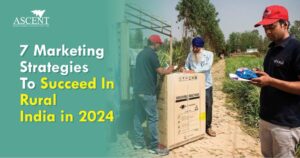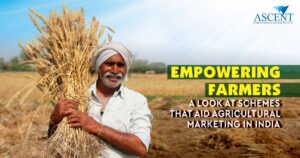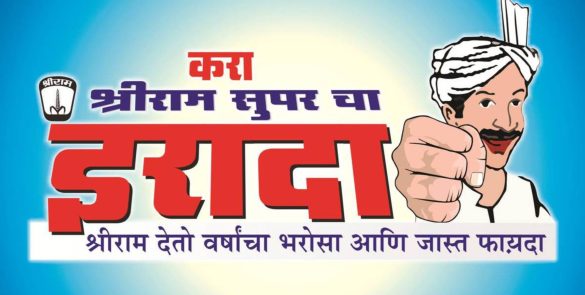India has been primarily an agricultural nation for centuries. For the rural population, agriculture and related activities remain of the highest priority. After all, 66% of India’s workforce is engaged in this sector. The biggest to suffer, hence, in our agricultural society is education and literacy. So it is no big surprise that the literacy levels in India are shockingly low.
Where in the adults are concerned, India is at the top of the illiteracy statistics, as per UNESCO. Around 37% of the world’s illiterate adults live in India, and 32% of rural adults here are uneducated.
In this age of development and advancements, information is passed down in multiple ways. However, with reduced literacy rate, most farmers and people in rural areas cannot access the needed information. This scenario keeps them away from being able to use newer and better technologies resulting in inefficiency and low crop yield.
The Increasing Use of Mobile Phones despite Illiteracy
Despite the high illiteracy, penetration of mobile phones all over India remains high, with a billion being used. According to mobile phone usage prediction, this number is expected to rise to 1.4 billion by the year 2020. People in the villages of India, now have access to and actively utilize mobile phones. Now, just 2% of the population uses landlines. The number of people who own mobile phones is higher than the number of people who own televisions in rural India.
Mobile phones have become cheaper than ever in the last decade. They are affordable and convenient in use. With the introduction of Reliance Jio and the resultant slashing of prices, the internet has become so much more accessible. Those who can’t read or write in English have the option of changing their mobile phone’s layout to Hindi, and in some cases, even regional languages.
Technology Transforming the Lives of Indian Farmers
Technological advancements hold the key to multiplying the productivity of not just the urban population, but also the rural folks. Agriculture has turned more inclusive, and transformations have drastically improved productivity. The popularization in the usage of tractors for farming is one such example from the past.
The government has implemented many schemes, and Digital India programs have been targeting the agriculture sectors. Subsidies are being provided directly into bank accounts, and technology is being used to improve the provision of water and seeds. Take the eNAM from 2016 as an example.
The eNAM or the National Agriculture Market has created an online platform that integrates the agriculture markets. Through the eNAM, farmers can check information related to the Agriculture Produce Market Committees, the prices, and the arrival of commodities and even raise bids across the markets.
The Government of India is mapping water demand, and its management and supplies are being taken care of using technological advancements. To ensure tenure of land, land records are being updated through the Digital India Land Record Modernization Programme (DILRMP). In 2017, orders were issued by the Government of India, which made it mandatory for mobile phones to support different languages. As per the issued order, not only English or Hindi but at least one regional language has to be enabled in phones.
A Farmer’s Son Providing Agricultural Aids with the Help of Technology
Dr. Vijayaragavan Vishwanathan is the son of a farmer from Southern India. Coming from a rural background, he realized how deep-rooted the problem of illiteracy is in rural India. He also realized that this was one thing which was holding the farmers back. So, he came up with a solution, “Agri App.”
The Agri App or Smart Agri can be used by farmers both with and without the internet, which is appealing to different users. He created a simple hand-held device that has to be placed in the soil and further connected to the app. The device measures the level of nutrients, water, and pH levels of the land and relays information to the app. For making it easier and in support of the farmers, the data or information is coded into red and green color to indicate good and bad soil condition, respectively.
Dr. Vishwanathan has made a trend to digitalize farming in rural areas of India. Many other apps are introduced and launched since the trend-setting of Agri App.
Agriculture App Revolution
Use of flexible and multi-lingual apps has revolutionized the life of farmers. These apps essentially help farmers with evolving communication skills and technologies. With the increased usage of mobile phones in India, many more tools are being introduced on such apps that are in the local market.
Just like Agri App, many other apps are built by companies in similar domains. An app was recently developed by Jaylaxmi Agro Tech that uses audio and visual tools to give a detailed analysis of ways to improve productivity. In addition to that, it also provides users with ways to earn more money. Further, the app has enabled potential and useful opportunities for farmers to grow. The app doesn’t require internet, just like Agri App.
Janani Agri Serve has developed another app that provides a more personal outlook to the farmer. The app enables farmers to solve issues concerning soil, irrigation sources, pest issues, previous crops grown, and also the current ones. It further helps in facilitating a variety of seeds through a personalized agriculture advisory service via mobile phones.
Mera Kisan is yet another agricultural app that is gaining popularity among farmers. It connects farmers to other farmers and eliminates intermediaries which increase the profit for farmers. The only requirement of these apps is the knowledge of necessary basic literacy skills, and the farmers have a bright future in front of their eyes.
Further, Brij Kothari, the founder of Planet Read, has found a way to organically tackle the issue of the low literacy rate among farmers. He launched Planet Read, which is a non-profitable Indian organization that helps users with the concept of subtitling. This practice has been done via televisions for twenty years. Planet Read follows a “karaoke” method to educate its pupils.
Brij Kothari says, “Mobile phones are surpassing televisions. Unlike televisions, learning from mobile phones can be a customized experience depending on a user’s needs. Even weak readers can use these technologies.” He suggests focusing on the next generation of farmers. This way a better future for farmers will be ensured, he further says.
Key Takeaways
Digitalization has reached remote areas of the country, giving a perfect chance for farmers to earn higher profits with the developing technologies. Many apps have simplified the lifestyle of farmers and made their work more accessible and profitable. The Indian government has set high expectations with these applications. And right measures are taken into consideration to fulfill these expectations. With awareness through these apps, India will reach new heights by fulfilling all the goals.















One Response